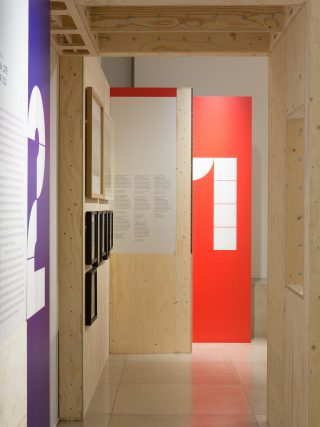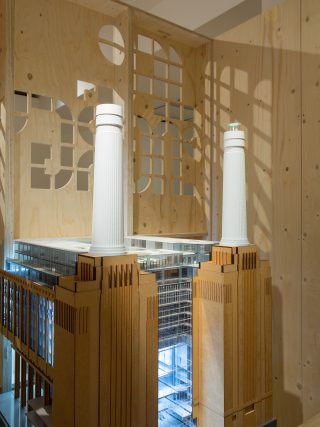A new exhibition at the RIBA – Long Life, Low Energy: Designing for a Circular Economy – explores the shift away from a culture of demolish and rebuild, and towards retrofit and reuse in the quest for net zero.
Buildings account for around 40% of all greenhouse emissions globally and the consumption of half of the raw materials consumed worldwide each year, according to RIBA’s Built for the Environment report. Honing in on the UK, that same report shows that a staggering 63% of all our waste stems from construction and in particular, the demolition of some 500,000 buildings each year. RIBA’s new exhibition – Long Life, Low Energy: Designing for a Circular Economy – draws on this data to push the agenda for a swifter shift towards a circular economy within architecture that will help create more sustainable building practices for the future.
The exhibition is split into three sections and uses material from the RIBA Collections to illustrate our approach to construction and demolition historically, followed by ten best practice cases studied for retrofit – including the recently refurbished Battersea Power Station by WilkinsonEyre and Architecture Today Awards finalist The Standard hotel by Orms – and concludes with a section dedicated to contemporary research.
Here, there’s evidence that the problem of construction waste is starting to be seen as an opportunity, with rubble and used components transformed into new building materials or projects. Among the ideas floated for wider adoption are material passports and “urban mining” where detailed records of carbon intensive materials – such as steel and stone – can be easily identified for reuse should a building be demolished. Property developer Fabrix is trailblazing in this area with its disassembly, recertification and reuse process for steel, where carbon-intensive re-smelting is currently the most common reuse route. Fabrix’s showcase for this process is the reuse of steel taken from the demolition at One Broadgate, which will go on to live in new buildings by Sheppard Robson and Hawkins\Brown.
The final leg of the show makes the case for a move away from carbon-heavy materials altogether and towards use of regenerative and plant-based materials such as cork. The cork block construction system developed by Matthew Barnett Howland with Dido Milne and Oliver Wilton for its carbon neutral RIBA award-winning Cork House, for instance, is presently being developed for light industrial applications. While at the Glyndebourne Croquet Pavilion by BakerBrown Studio, recycled champagne bottle corks are being paired with oyster and lobster shells to make use of a unique waste stream stemming from the Glyndebourne Opera’s summer festival.
“This exhibition is intended as a snapshot of ‘where we are now an where we are going’; recognising the innovation currently undertaken in the fields of reuse and retrofit, while showcasing ongoing research into circular economy principles currently being undertaken by practices,” says RIBA curator Pete Collard.
“These work-in-progress initiatives demonstrate alternative methods of practice that can yield significant environmental benefits, but remain relevant to all scales of architecture.”
Long Life, Low Energy: Designing for a Circular Economy is on show at 66 Portland Place until 1 April 2023.




































